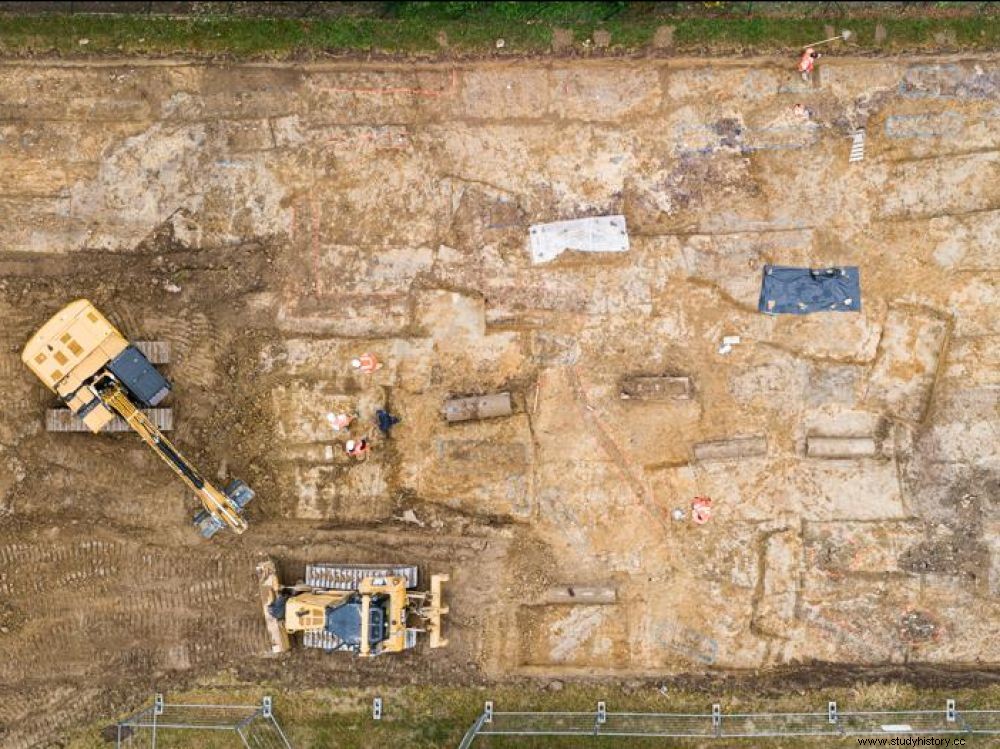Nearly 150 burials have been unearthed in the early Christian necropolis of Saint-Pierre-l'Estrier in Autun. The excavations reveal a great diversity of burials.

Aerial view of the excavation site.
One hundred and fifty tombs dating from the middle of the 3rd to the 5th century, one of which may contain a well-preserved remains, have been unearthed in Autun (central eastern France) during excavations of an important necropolis in northern Gaul , we learned on July 3, 2020 from the site organizer.
One of the first mentions of Christ in Gaul
Preventive research, begun before the start of construction of a house, revealed a necropolis, near the early Christian church of Saint-Pierre-l'Estrier, which hosted "the oldest Christian burials in the northern half of Gaul “, specified the National Institute for Preventive Archaeological Research (Inrap), in charge of the research. In particular, has already been found “one of the first mentions of Christ in Gaul, the inscription of Pektorios, dated from the 4th century ", specifies the Institute. "The research takes place on a plot of 1,300 m² located in a vast funeral site of 3 hectares which has remained intact to the northeast of the ancient Roman city ", specified the archaeologist Carole Fossurier who directs the site. Founded in the 1st century BC, the Roman city of Autun has been one of the high places of medieval Christianity since the end of Antiquity.
A still hermetic sarcophagus which will be opened in August
Among the 150 tombs, the eight archaeologists discovered several sandstone sarcophagi, including a 1,500-year-old "still airtight " and which "could reveal a well-preserved remains “Perhaps still wearing clothes, Nicolas Tisserand, co-responsible for the excavations, told AFP. This tomb “will be open at the end " of the site scheduled for August. Other individuals were placed in coffins usually made of wood but also lead. Formwork covered with tiles was also found. "Few objects are associated with the deceased in the graves , a fact consistent with Late Antiquity funerary practices ", emphasizes Inrap. "No object was found because the deceased were buried in the strictest destitution according to the precept of the Christian religion ", says Mr. Tisserand.

Lead coffin, containing preserved skull and bones. Credit: Inrap
Lead coffins are very uncommon in the northern half of France. Autun is one of the most important deposits, with around forty known examples, including eight from the current excavation. They generally carry neither mention nor decorations. "However, a few bear cruciform signs that are difficult to interpret ", reveals the institute. The research also delivered the remains of six square stone mausoleums of 10 m 2 "containing at least one grave " and traces of a "wooden building “, continues Mr. Tisserand.
This forgotten and then now studied necropolis remained in the memory for a long time:several mausoleums were still visible in the 18 th century.
AST with AFP
